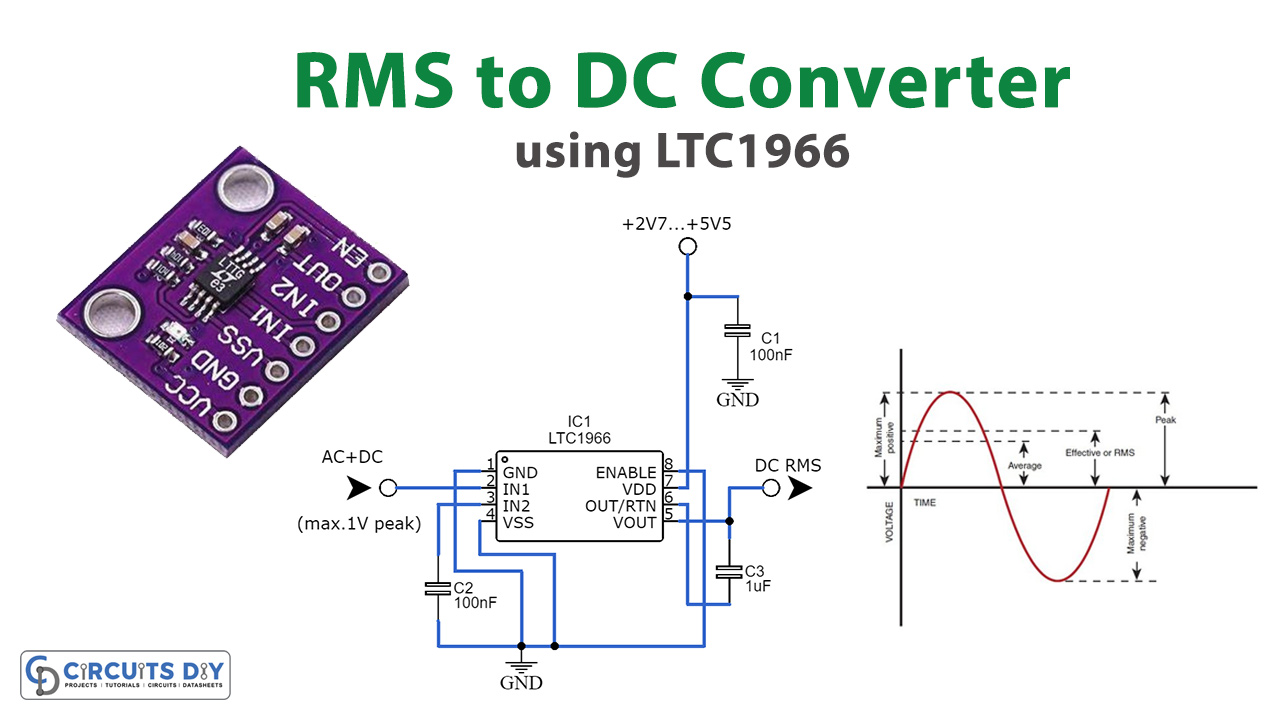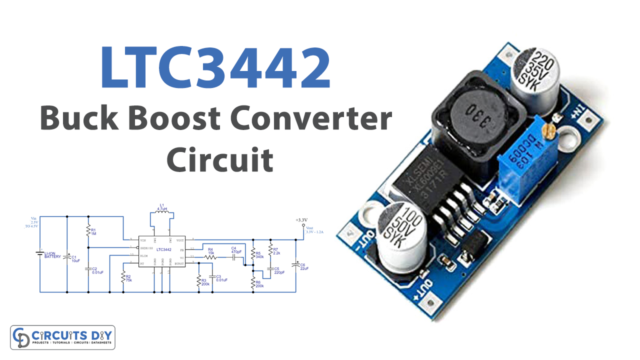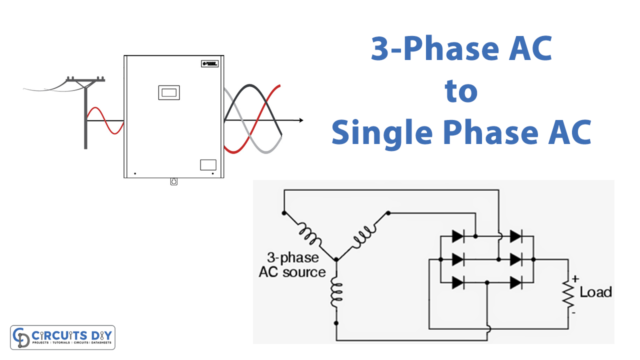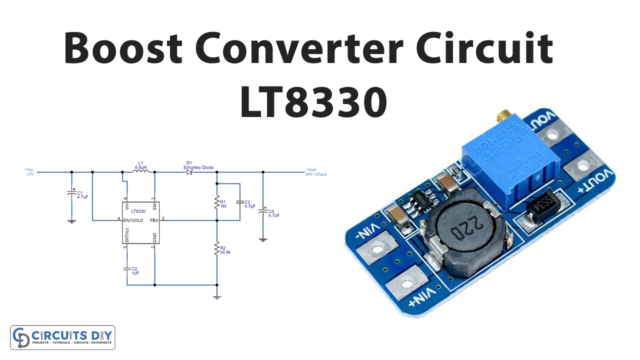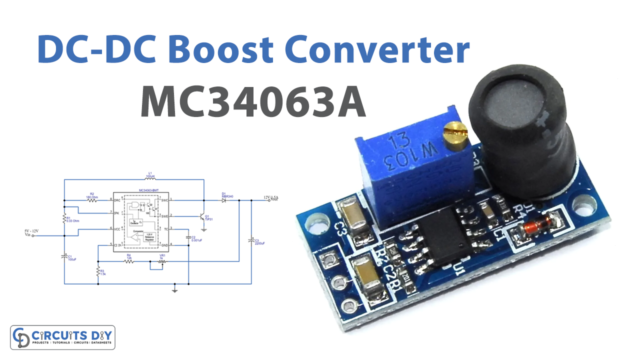The input voltage range on the differential inputs IN1 and IN2 extends to the supply rails, and so in the non-symmetrical circuit shown here, the voltage on IN1 can swing between 0 V and the supply voltage. If the signal to be measured is AC only, then another coupling capacitor will be required. The input impedance is many megohms. The output voltage at the OUT pin can be offset by applying a DC voltage to the OUTRTN pin.
This is particularly helpful when using the device with LCD multimeter ICs such as the 7106. A further capacitor is connected to the output which is charged up to the required voltage by the switched-capacitor circuit in the converter. The capacitor required is ten times smaller than that demanded by previous RMS to DC converter designs. The LTC1966 is not temperature-sensitive and is available in an 8-pin MSOP package. It allows a tiny RMS-to-DC converter to be constructed using just four components.
Hardware Components
You’ll need the following hardware components to get started:
| S.no | Components | Value | Qty |
|---|---|---|---|
| 1 | Integrated Circuit IC | IC1= LTC1966 | 1 |
| 2 | Capacitors | C1 ,C2 = 100n C3 = 1µ | 2 1 |
Schematic

The voltage range of the inputs IN1 and IN2 extends to the supply rails, which means that in the asymmetrical circuit depicted here, the voltage on IN1 can oscillate between 0 V and the supply voltage. If the signal being measured is AC-only, then an additional coupling capacitor will be necessary. The input impedance is quite high, in the order of several megohms. By applying a DC voltage to the OUTRTN pin, the output voltage at the OUT pin can be adjusted, which is particularly useful when using the device in conjunction with LCD multimeter ICs like the 7106.
An additional capacitor is connected to the output, which is charged to the desired voltage by the switched-capacitor circuit within the converter. This capacitor is ten times smaller than what was previously required by RMS to DC converter designs. The LTC1966 is not affected by temperature variations and is offered in an 8-pin MSOP package. It enables the creation of a compact RMS to DC converter using only four components.

